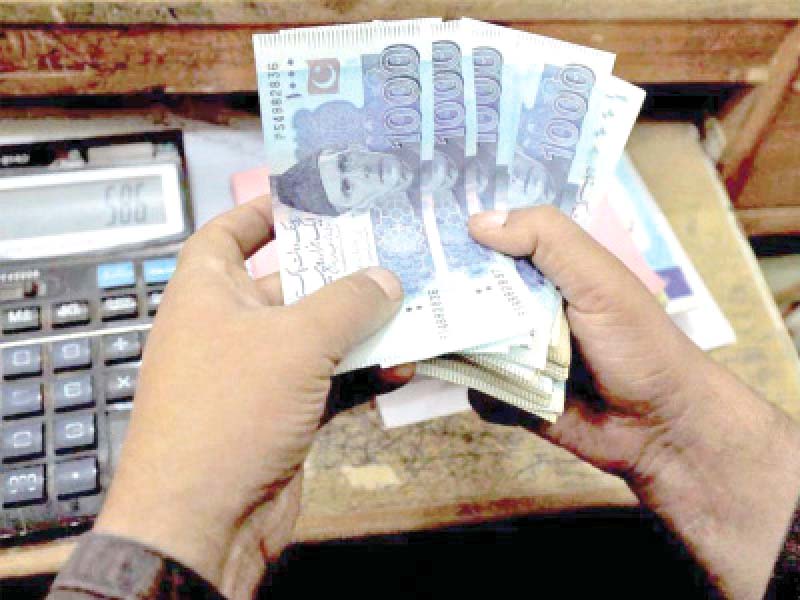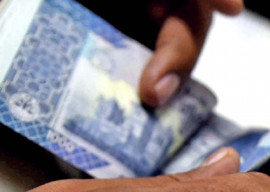
The federal cabinet on Tuesday approved a budget strategy paper for the next fiscal year, which shows a lower economic growth rate but high inflation and public debt than what the government had initially expected to achieve in its fourth year in power.
The targets for the first year of the three-year Medium Term Budget Strategy Papers for 2021-22 to 2023-24 are largely in line with the agreement reached with the International Monetary Fund (IMF), except the primary deficit target. Headed by Prime Minister Imran Khan, the cabinet approved the 4.2% economic growth target while inflation target is set at 8% for fiscal year 2021-22. The total size of the federal budget is projected at Rs8.1 trillion — up by Rs919 billion or 13% over this year’s budget.
This is because of relatively higher spending on development and interest payments, as there is nominal increase in defence and running of the civil government. However, the macroeconomic framework for the next fiscal year — which coincides with the fourth year of the PTI government, is significantly different from what the government had earlier anticipated. The variations on key goals were because of negative impact of the coronavirus, significant devaluation of the currency, and lower-thantarget tax collection, which all added into the public debt.
The government had earlier targeted to achieve 4.6% economic growth in fiscal year 2021-22, which is now adjusted downward to 4.2%. For this fiscal year, the government has projected 2.9% GDP growth — higher from 2.1% target. It had hoped to bring the inflation down to 6% but the target for the next year is 8%. There was a major deviation in the FBR’s tax collection goal. As against the expectation of having tax collection equal to 15.1% of the GDP, the government has now projected next year’s tax collection at just 11.2% of the GDP — a downward revision of 3.9% of the GDP or Rs2.1 trillion.
This revision comes despite the fact that the government has expected that the FBR would increase its collection from this year’s expected 9.8% of the GDP to 11.2% or Rs5.9 trillion in the next fiscal year. The overall budget deficit that had earlier been expected to be brought down to 3.6% in the next fiscal year is now targeted at 6% of GDP or Rs3.1 trillion. As a result, as against earlier goal of bringing the public debt to 70.6% of the GDP or Rs37 trillion in the next fiscal year, the government has now projected the public debt-to-GDP ratio at 84.3% or Rs44.2 trillion.
The public debt is now projected to be Rs7 trillion higher than what the government had hoped. All this suggests that the PTI government could not bring any major change in the country’s economic landscape and things appear the same, except bringing the current account deficit down by 77% in three years. For fiscal year 2022-23, the last year of the PTI government, the budget strategy paper projects 4.6% growth rate and public debt-to-GDP ratio at 81.8% — still far above the statutory limit of 60% of the GDP.
The federal cabinet approved the budget strategy paper with the goals of ensuring primary surplus and a reduction in the public debt, said Federal Minister for Science and Technology Fawad Chaudhry while addressing a press conference. Macroeconomic framework The next year’s budget size is shown at Rs8.1 trillion. Out of the projected budget, an amount of Rs4.4 trillion has been proposed for debt servicing (Rs3.1 trillion) and defence (Rs1.33 trillion), which is equal to 55% of the projected budget, according to the strategy paper.
Read ECC may approve PPA amendments
The debt servicing will be equal to 53% of the FBR’s next year’s target. The projected defence spending is Rs110 billion less than what the IMF has shown in its report. The net federal receipts of Rs4.46 trillion, after paying provinces’ share in taxes, are also equal to the total requirements of debt servicing and defence. This means that the government will run its affairs, including paying salaries to the employees, and the development expenditures by taking more loans from the banks despite setting next year’s tax collection target at Rs5.9 trillion.
The finance ministry is aiming at protecting the development spending, which it has now projected at Rs800 billion in the next fiscal year. This year’s PSDP spending is projected at Rs660 billion. The paper showed that Pakistan will miss the IMF’s primary budget deficit target of Rs249 billion for this fiscal year and the deficit is projected at Rs544 billion. However, against the IMF’s condition to show a primary surplus of Rs143 billion, the finance ministry has projected a primary deficit of Rs49 billion in the next fiscal year too. The cost of pensions would further surge to Rs480 billion for the next fiscal while the cost of running the civilian government would increase to Rs510 billion — an addition of only Rs22 billion.
The subsidies will go up from Rs459 billion in this fiscal to Rs501 billion in the next fiscal year, whereas the government has also set aside Rs291 billion for meeting contingencies. The budget deficit is estimated at Rs3.6 trillion or 6.9% of the GDP for the next fiscal year. But once again, the federal government has projected a huge provincial cash surplus of Rs440 billion to show the overall budget deficit at Rs3.2 trillion or 6% of the GDP.
Taxation
The government admitted in the paper that Pakistan’s tax system was plagued with twin issues of a narrow tax base and huge tax gap in various sectors. The tax collection target is around Rs5.9 trillion, which will be achieved on the back on a nominal GDP growth of 12.2% and additional revenue measures of around Rs700 billion. The finance ministry stated that in the next budget, the focus will be on taxation of net profits under income tax and subjecting all taxable supplies to a standard sales tax regime.
The initiative involves removal of tax distortions, unnecessary exemptions, tax reductions, zero rating etc. The paper underlined the personal income tax reforms, removal of unnecessary exemptions and rationalisation of tax rates and reduction of tax slabs. It stated that the FBR would rationalise presumptive and minimum tax regimes.
The current account deficit is projected at $4.7 billion for the next fiscal year and gross official foreign currency reserves equal to 3.2 months of imports cover of fiscal year 2021-22 or $13.7 billion. The imports are projected at $51.4 billion for the next fiscal year and the exports at $25.7 billion — showing a trade deficit of $25.7 billion. The next fiscal year’s projected trade deficit is higher than this year’s deficit due to marginal increase in exports

1732170891-0/BeFunky-collage-(79)1732170891-0-165x106.webp)

1729234806-0/Robert-Pattinson-(2)1729234806-0-165x106.webp)
















COMMENTS
Comments are moderated and generally will be posted if they are on-topic and not abusive.
For more information, please see our Comments FAQ